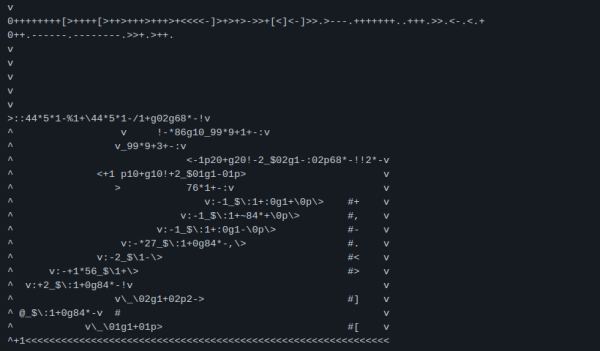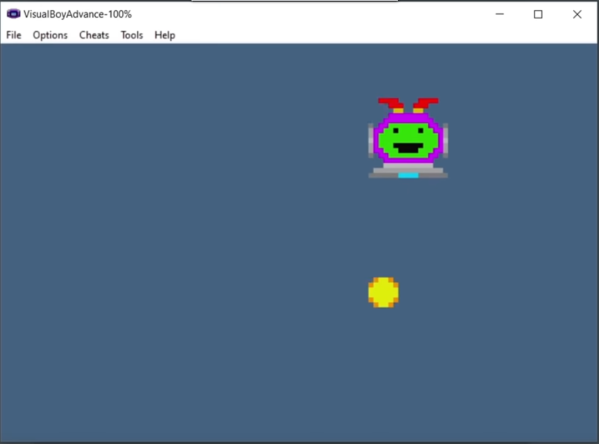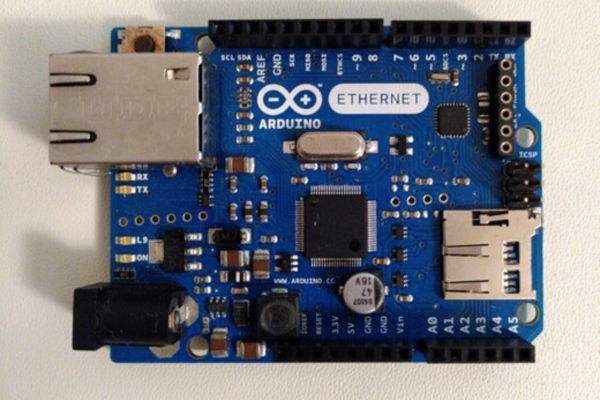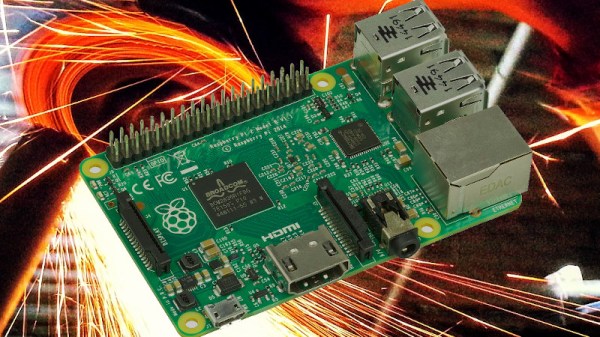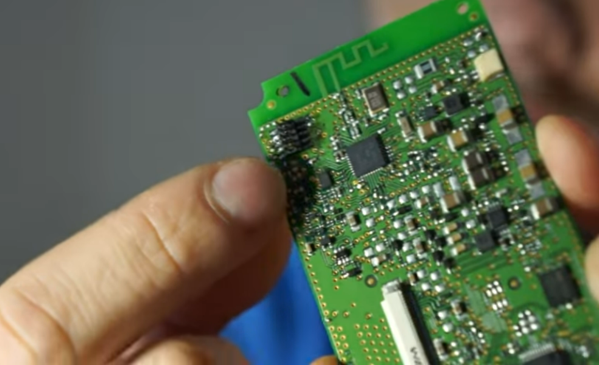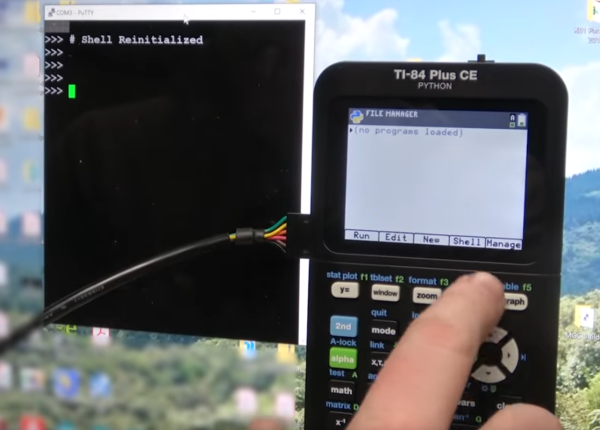Many of you will have heard of the esoteric programming language Brainf**k_. It’s an example language that’s nearly impossible to use because it’s too simple. It’s basically a Turing computer in code – you can essentially put characters into an array, read them out, increment, decrement, and branch. The rest is up to you. Good luck!
What could be worse? Befunge, a language that parses code not just left-to-right or top-to-bottom, but in any direction depending on the use of ^, v, >, and <. (We love the way that GOTO 10 looks like a garden path in the example.)
Uniting the two, [rsheldiii] brings us BrainFunge, a Brainf**k_ interpreter written in Befunge. And surprisingly, the resulting write-up sheds enough light on both of the esoteric programming languages that they make a little bit of sense. If you try to read along, you’ll definitely be helped out by Esolang Park, which was new to us, and accommodates the non-traditional parsing while displaying the contents of the stack.
If you get a taste of the esoteric, and you find that you’d like a little more, we have a great survey of some of the oddest for you. After cutting your teeth on Befunge, for example, we bet you’ll be ready for Piet.

